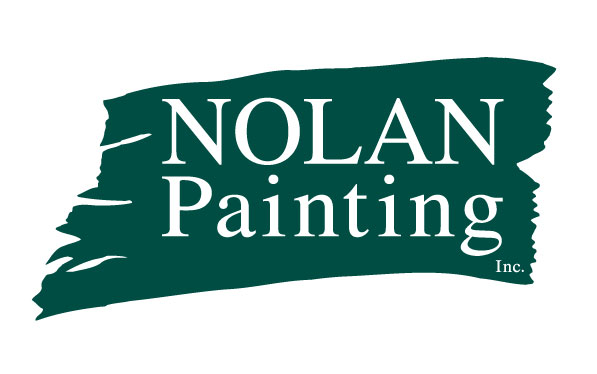Nolan Painting’s Homeowner’s Guide to Painting
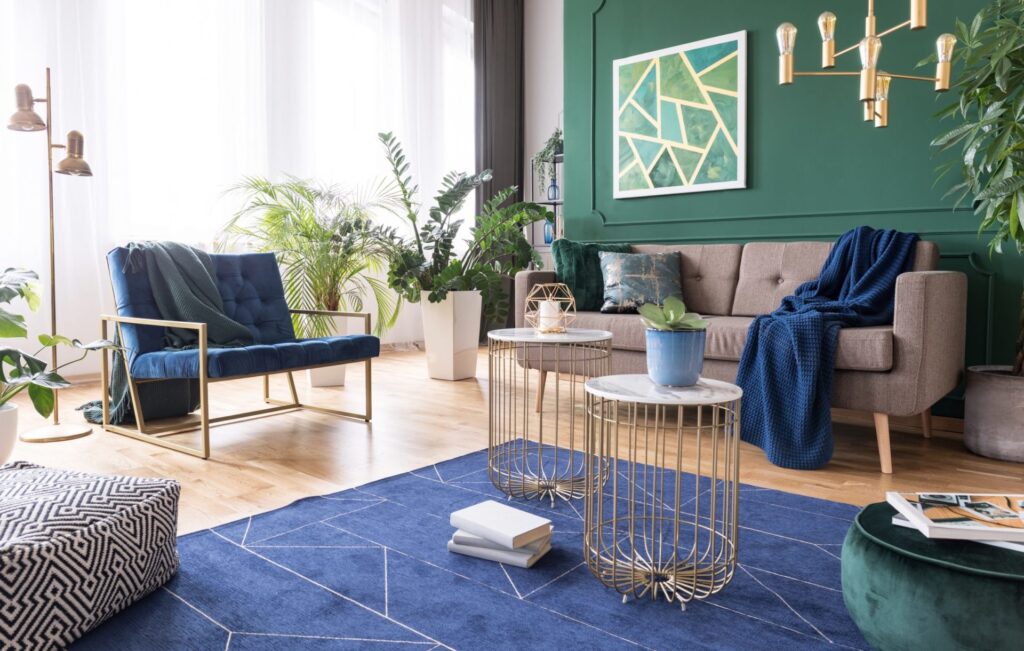
Section 1 – Before Hiring a Painting Company, Make Sure You Ask These 10 Questions
Section 2 – How to Pick Paint Colors in an Open Floor Plan
Section 3 – Choosing a Finish
Section 4 – The Right (and Wrong) Way to Use Color Samples

Before Hiring a Painting Company, Make Sure You Ask These 10 Questions
There are a lot of people who say they are professional painters (virtually everyone says they know how to paint), and for the average homeowner, the task of finding the right team for the job can seem a bit daunting. How do you choose a painting contractor? Where do their price quotes come from, and why can they range so widely for the same work?
How do you know they’re going to do a good job? And is the work going to be high-quality, to last through the years?
Before you commit to a company for your next home renovation, you can use these criteria to make sure they’re a trustworthy team that’s going to do good work for a fair price:
1. How experienced are they?
Look for a company that has more than five years of industry experience. That’s really when the learning curve starts to smooth out, and you can be sure that the team has a solid base of knowledge and technical expertise to get the job done right.
In addition, it might be worth your time to seek out full-time painters, rather than jack-of-all-trades handymen. There’s no shortage of self-employed do-it-yourselfers out there who can paint your living room for a song, but if painting isn’t their full-time, bread-and-butter occupation, the final product is far from certain.
After five years, they’ll probably have built a reputation in the community, as well, so you can ask around and see if they’re known to be fair and hard-working.
2. Do they use sub-contractors?
Good painting companies don’t outsource work to subcontractors — they handle all aspects of the renovation themselves. It’s really the only way the company can have ownership over the quality of their team’s work and maintain a high standard of customer service.
When you’re working with subcontractors, you’re just not going to have the same level of accountability.
Your questions for painting contractors should include: Is the company representative who visited your home and gave you the estimate one of the painters? Have you spoken with the people who will actually be performing the work? Whenever possible, make sure the people you’re hiring have a personal stake in the outcome and are willing to stand behind their own work, rather than farming it out to third parties.
3. Do they offer a warranty and are they insured?
Checking to see if the company offers a warranty on their work and offers liability insurance is another way to tell if they’re accountable. If a paint failure occurs during your warranty coverage, the painters will cover the materials and labor to repair it.
What happens when the job doesn’t go as expected? Will the company offer 100% work satisfaction? Ask them if they have workman’s compensation and if they are licensed.
Additionally, hiring insured laborers is an absolute must. Everybody knows accidents can happen, and the last thing you want is for an injury to take place, for which blame — and liability — is uncertain. If you’re inviting workers into your home, make sure they’re fully and properly insured. On the list of questions to ask your painting contractor, insurance should be toward the top.
4. Have they received accolades for quality business practices?
If the company has really established themselves as hard workers with a commitment to community service, you can look up their history of public recognition and find out how they’ve contributed to the field. Angie’s List and your local Chamber of Commerce are great places to get started.
Other web forums like Google Places Reviews can give you a democratic perspective on how the company has performed over the years.
5. Can they provide references and reviews?
Sometimes you can get a better picture of a company’s workmanship and customer service by speaking with one of your friends or neighbors. A local company will undoubtedly have built a reputation over the years, for better or worse, so when in doubt just ask around.
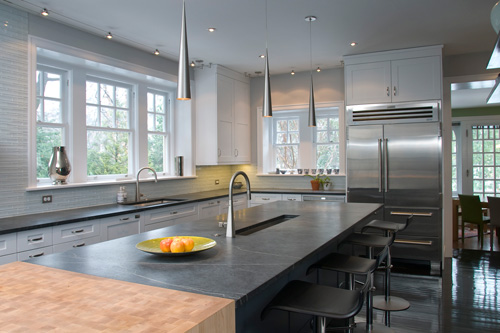
Don’t be shy about asking the company to hear a few customer testimonials, as well. If they take pride in their work, they should be more than happy to oblige! Check out their website for any choice sound bites or endorsements they’ve received. In addition, look into their social networks of choice to see how their work has been received by the general public.
6. Do they have photos from previous jobs?
It’s true: A picture is worth a thousand words — especially when you’re talking about paint. It can give you a glimpse of how clean they’re going to keep the job site when they’re at your house, how effective their final results are and how much experience they really have.
Tread carefully if you’re dealing with an individual or company that hasn’t documented their work throughout the years. It doesn’t necessarily mean they have something to hide, but you do want to find a professional who proudly and enthusiastically stands behind their work.
7. Do they keep a clean work site?
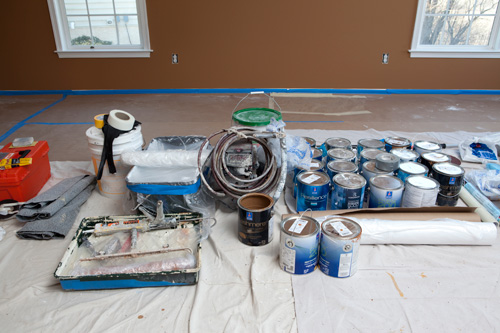 Photos can definitely help to answer this question, and the cleanliness of the work site is going to make a huge impact on the experience you have once they’re working in your home.
Photos can definitely help to answer this question, and the cleanliness of the work site is going to make a huge impact on the experience you have once they’re working in your home.
You don’t want someone who’s going to do a quick, sloppy job. It’ll be chaotic during the renovation and likely leave you with a lower-quality result in the long run.
8. What kind of paint do they use?
A good painting company isn’t going to cut corners on materials. If you’re wondering why the quote you’ve gotten is lower than you expected, ask them what brand they use and how many coats of paint are included as well. The last thing you want is to (unknowingly) pay for an inferior product that will look less than perfect when the job is complete.
Getting an accurate quote for quality materials will actually save you money in the long run, because you won’t have to re-do the job when you’re dissatisfied with the poor coverage and durability of a cheaper paint.
9. How much prep is included in the estimate?
 Like paint-quality, preparation is one place where a less scrupulous painting company might try to cut corners and offer a cheap quote that doesn’t include sufficient prep. The construction style of your walls and outdoor surfaces may affect the quote.
Like paint-quality, preparation is one place where a less scrupulous painting company might try to cut corners and offer a cheap quote that doesn’t include sufficient prep. The construction style of your walls and outdoor surfaces may affect the quote.
For example, if you have cracking lath-and-plaster walls, they may need additional up-front preparation for a smooth, professional result. Be sure to ask the right questions and make sure you are going to receive adequate prep. Up to eighty percent of a great job is preparation time.
10. Are they involved in the community?
What else should you ask your painting contractor? How about what their level of civic engagement is?
The capstone to a great renovation experience is knowing that you’ve partnered with a company as invested in your community as you are. Whether it’s sponsoring the local youth leagues, practicing environmentally safe painting practices, or donating leftover supplies to Habitat for Humanity, partnering with a local company that’s really involved in the neighborhood is a choice you can feel good about.
You’ll know that the dollars you spend on your renovation are likely to recirculate into the local economy and help the area continue to thrive.
How to Pick Paint Colors in an Open Floor Plan
Choosing paint colors for an open floor plan can seem like a difficult challenge to many homeowners.
Because this style lacks clear room separations, areas need to be defined in a different way. Whereas in more “traditional” spaces, walls, doorways and other borders provide natural “breaks” between different decorating styles, open floor plans provide a unique challenge. How do you go about creating different styles in different areas? Or would you prefer a more uniform approach?
One of the ways to define the distinct areas throughout your home is through thoughtful home decorating paint color selections.
There are three different ways to choose paint colors in an open floor plan:
1. Stick to one hue throughout, usually a neutral shade.
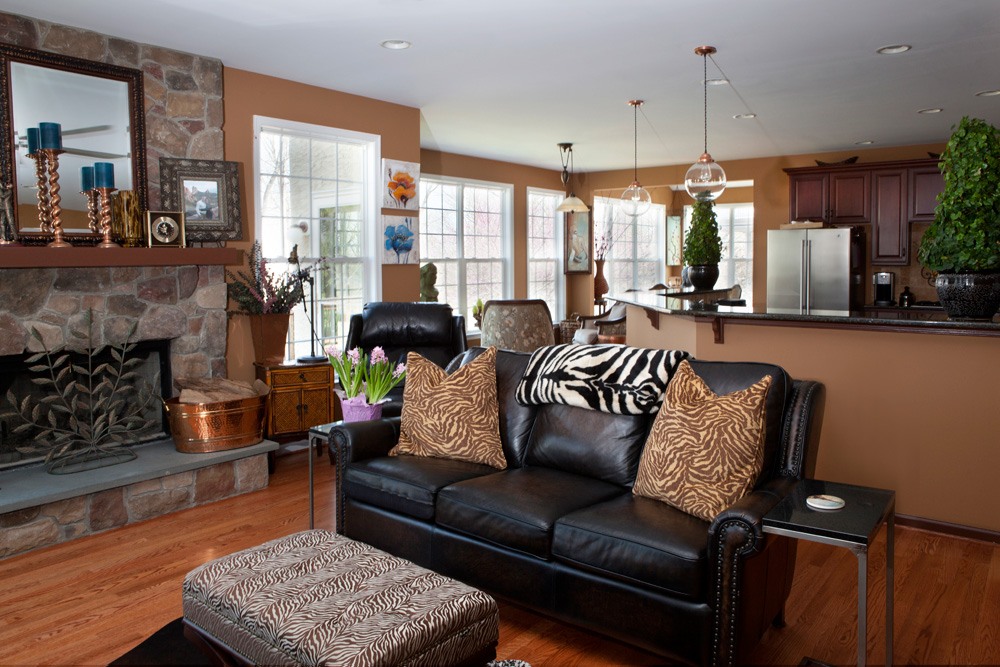 Paint colors for your home can do one of two things: They can be a focal point all their own, or they can disappear into the background, allowing the space itself — and your furniture — to define the room’s character.
Paint colors for your home can do one of two things: They can be a focal point all their own, or they can disappear into the background, allowing the space itself — and your furniture — to define the room’s character.
If you find yourself in the latter camp, consider using just one hue throughout your home. This is a good choice if you want your paint to be more of a backdrop to your furnishings and not the focal point of the space. However, this doesn’t necessarily mean you have to select a light house paint color.
Natural and artificial lighting can also contribute to establishing a color “tone” for the space. Though the walls may be continuous, lighting can change a color from one area to the next. What looks green in one light might look very blue in another.
2. Define areas with accent colors.
Although the environment you’re working with might not be intuitively divided into separate spaces, you can still take steps to make sure the function of each area is clearly defined by its color and personality. Consider choosing different accent colors for different areas.
This can really bring warmth to an open floor plan, and it is a good way to define specific room areas. It’s also a way to incorporate bolder accent colors — colors, for example, that you might’ve considered too bold for a full wall, but that you still want to incorporate into the personality of your home. A kitchen wall could be accented in a green, for example, and a living area could have a chocolate accent wall.
The only rule of thumb with this design is that the adjacent walls should be painted in a less vibrant tone, thus allowing the eye to rest. This approach will complement the more vibrant accent colors and bring balance to your space.
3. The third way, and a personal favorite, is an in-between of the two styles.
Of course, out-of-the-box thinkers and more daring decorators might consider a third option: A blend of the two techniques we’ve looked at so far.
This approach involves using a monochromatic scheme, but incorporating different shades of the same color to define or accent individual spaces. The simplest way of doing this is by sticking to the colors on one paint strip, and using the deeper tones on the same strip as your accents.
This design allows the eye to move seamlessly around the space, but also provides the opportunity to use bolder accent colors. The end result is a room that adheres to an ordered, uniform color scheme but still allows for individual features to be called out with more “adventurous” hues of the same color.
Once the wall color (or colors) is determined, there is still trim and ceiling paint to be selected. In an open floor plan, it’s best to keep the trim and ceiling colors the same throughout, so the space feels unified and has continuity and flow.
Of the three methods, this one might also be the most practical. You’ll be buying several house paint colors in smaller quantities, rather than significant quantities of just one or two colors. If one color doesn’t quite work out the way you expect and you can’t return your bucket of paint (which is the case at almost every hardware store), you’re not out a bunch of cash.
Choosing a Finish
Have you ever touched up the paint in your home only to find that the color looks completely different? Surprisingly enough, it may not be the color that is off. Paint also comes in a variety of finishes that give your walls a different look depending on the amount of sheen mixed into the paint. When choosing a paint finish, it’s important to consider the area/room you are painting.
If you thought choosing the color was difficult, choosing the right wall paint finish may be just as confusing. Here are a few simple tips to help you make the right choice for your home. Each finish offers a different level of reflectivity and durability.
Paint finish comes in four general categories:
- Flat Finish — Also known as Matte Finish
- Washable Flat
- Eggshell Finish — Also known as Satin Finish or Low-Luster Finish
- Gloss Finish
While these are the general terms that surround the varieties of paint finishes for homes, there are several degrees within each one, such as a Dead Flat Finish, Flat Enamel Finish, Pearl Finish, and High-Gloss Finish.
Flat/Matte Finish
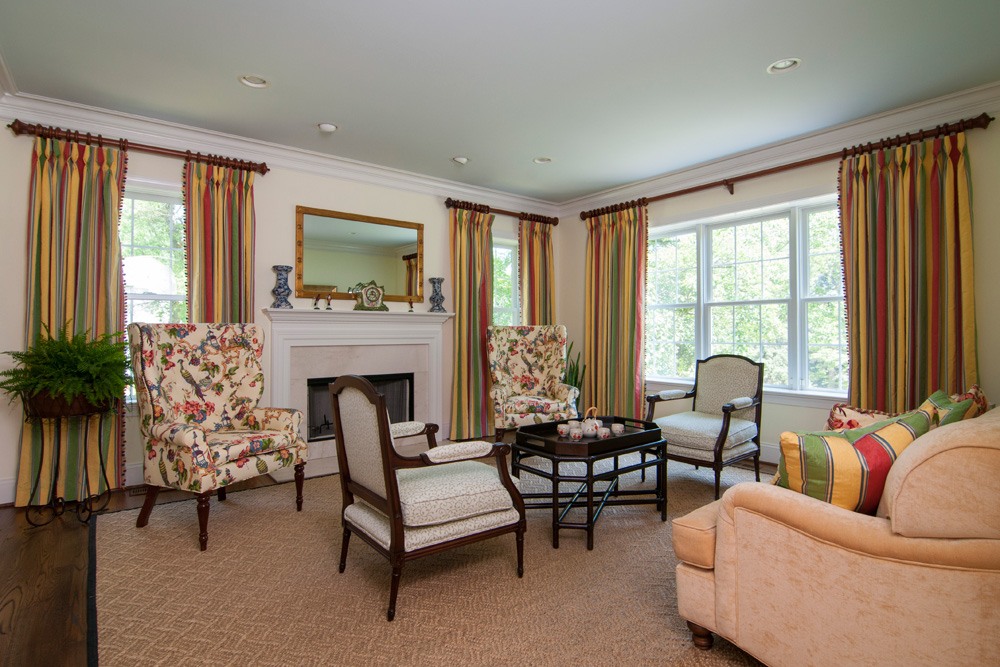 If you are looking for a well-saturated wall that has rich results, you’ll want to go with a flat finish. Flat paint is the most forgiving finish with the best color payout. If you need to cover imperfections, patching or joints, flat paint can absorb light, making your dings and flaws less noticeable.
If you are looking for a well-saturated wall that has rich results, you’ll want to go with a flat finish. Flat paint is the most forgiving finish with the best color payout. If you need to cover imperfections, patching or joints, flat paint can absorb light, making your dings and flaws less noticeable.
Note that this kind of paint finish has no sheen to it. The drawback to a flat finish is the lack of durability. Flat paint needs to be cleaned carefully, as scrubbing may remove some of the paint. This can cause an uneven or patchy look on the wall.
Best places to use flat paint: ceilings, low-traffic areas, and rooms that don’t require extensive cleaning.
Durability: medium to low
Washable Flat
Washable flats come only as Premium Flats, like Sherwin Williams Cashmere Flat. In addition to offering all the great attributes of a flat paint, like hiding imperfections and having good color saturation and durability, a washable flat also allows for easy touchups, and is washable and burnish-resistant.
Best places to use Washable Flat paint: general living spaces.
Durability: medium to high
Eggshell/Satin Finish
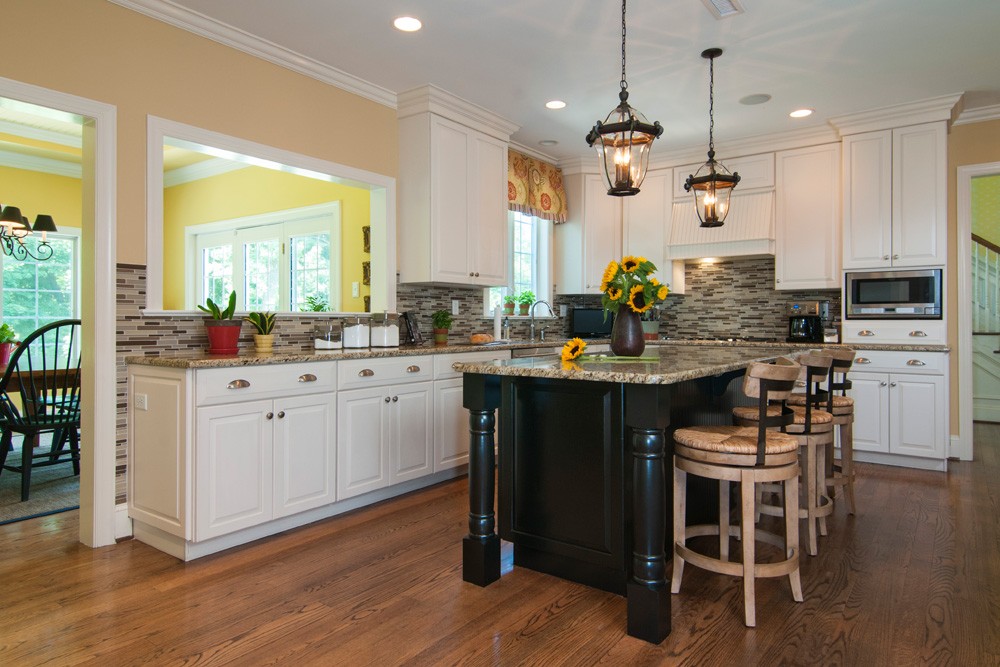 Eggshell finish is one of the best home paint finishes to use in areas where you’re more likely to wash and scrub. Eggshell has a subtle sheen that gives your room a great coloring, but it is faint enough to still hide imperfections. This finish reflects light and has a low-angular sheen. It doesn’t have the chalky appearance of a flat paint or the sheen of a semi-gloss.
Eggshell finish is one of the best home paint finishes to use in areas where you’re more likely to wash and scrub. Eggshell has a subtle sheen that gives your room a great coloring, but it is faint enough to still hide imperfections. This finish reflects light and has a low-angular sheen. It doesn’t have the chalky appearance of a flat paint or the sheen of a semi-gloss.
Eggshell finishes appear truest to the color of the swatch when they’re applied to the wall. Eggshell has one other feature that makes it a favorite for homeowners, too: Its strength allows it to dry just a bit harder than other paints, which helps the paint protect itself from environments that have more moisture in the air. Eggshell finish is also resistant to mildew, stains and dirt, and is a good finish for washing walls.
Best places to use Eggshell paint: living areas, kitchen, entryway, mudrooms, laundry rooms, bathrooms, playrooms, kids’ rooms, and other high traffic areas.
Durability: medium to high
Semi-Gloss Finish
Semi-gloss finish has a higher sheen, typically 40-70% more than other types of paint finishes. Semi-gloss finish is known to reflect light and have a beautiful glow, without being too shiny. Most durable of the finishes, semi-gloss holds up well in humid environments and is extremely easy to clean.
There’s a basic rule when it comes to paint finishes: The greater the shine, the more durable the paint will be. However, the higher the gloss, the more imperfections will show on your walls.
Best places to use Semi-Gloss paint: wood trim, kitchen cabinets and doors.
Durability: high
Room by Room: Choose the Best Finish for Your Most Important Areas
Knowing the differences between each of the major home paint finishes is just the first step, though. How do you make sure you’re choosing the right one for your home? There are many kinds of paint finishes, and each one provides distinct advantages and addresses a specific need.
Thankfully, it’s not a difficult task if you enter into it with an understanding of the basics:
- For the kitchen: Because this room is highly trafficked and tends to get messy, you want to choose a decorative paint finish that also allows for easy cleanup. For this reason, choose a paint with a high gloss or semi-gloss finish.
- For the dining room: For the classiest room in the house, you want a type of paint finish that will hide any imperfections that may be present in the drywall — and since this is a less-used room than some of the others, durability doesn’t have to be your number one priority. For this reason, an eggshell finish is probably your best bet for the dining room.
- For the living room: Your living room sees a lot of, well, living! To accommodate the foot traffic and the loving ministrations of your young ones, consider a satin finish for your living room. It stands up to higher levels of abuse and is easier to clean than some of the other types of paint finishes.
- For the bedroom: Although you likely think of your bedroom as your sanctuary, it’s probably not one of the most highly-trafficked areas of your house. As such, it won’t need a paint finish that’s quite so durable. You can consider colors available in flat or matte finishes, which saves you money on materials and provides some of the highest-pigment options you’ll find.
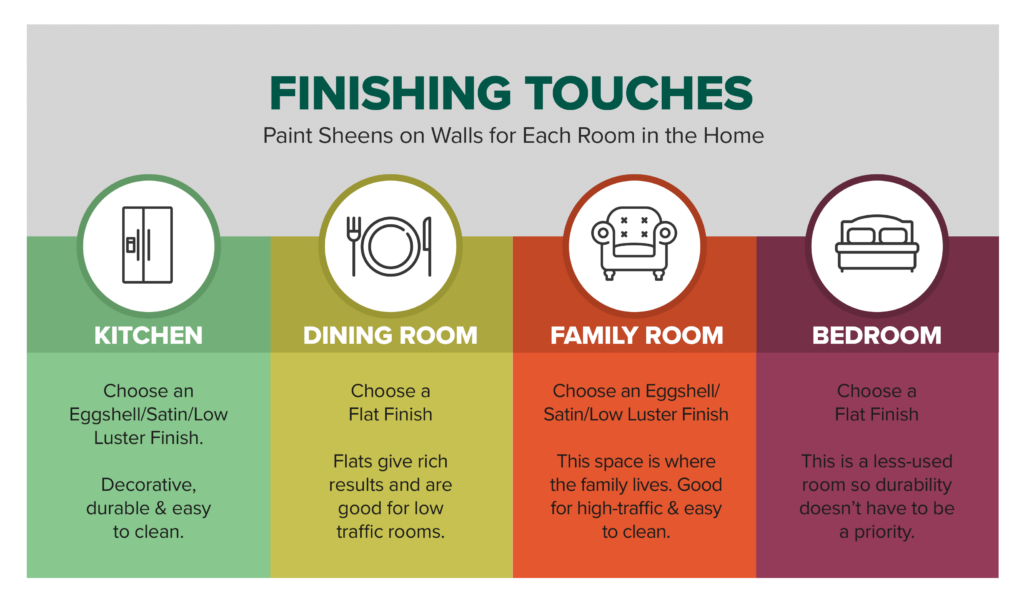
Naturally, matching your paint finish to the color is also important. If you’re targeting darker, richer colors for a particular room in your house, consider stepping down your paint finish to the next-lowest sheen. The colorant in paints adds sheen of its own, so take that into account. Higher-sheen paint finishes also run a bit higher, cost-wise, so consider this as you’re ironing out your budget.
The Right (and Wrong) Way to Use Color Samples
Choosing the right paint colors for your home is no easy task. While paint isn’t permanent, insofar as you can always paint over it with another color, you’re still more than justified in treating it as a long-term change. What this means in practical terms is that you want to get it right the first time.
That means you’ll want to obtain some home color samples. Taking color samples for a test run is important for finding just the right shade and finish, but there’s a right and a wrong way to use them.
The Wrong Way: Color Chaos
You’ve probably heard the advice: If you’re going to paint your walls, try out a sample first on the wall, to see how you like the color. The reality, though, is that this bit of conventional wisdom is a myth.
There’s obviously no better way to test out a home paint color than to see it applied to the area in question, but slapping a bunch of paint onto an interior wall might actually do more harm than good.
What really happens when homeowners start painting patches of wall is you end up with a jumble of thinly painted layers with rough edges — samples that can’t do justice to the color. It’s disorienting and bound to be ugly. You also run the risk of introducing colors and textures — that won’t be easy to paint over, even after several coats of the color you eventually decide on. Darker colors, for example, can sometimes take a great deal of time, effort and resources to hide fully if you ultimately go in a different direction and choose a lighter color.
Luckily, there’s a right way to use color samples for your home that won’t create unhelpful eyesores throughout your house.
The Right Way: Color, Cleanly Painted
The eye loves strong, consistent colors and clean-cut corners. As such, the rough edges of paint samples are going to be off-putting, no matter how lovely the actual color is. That’s why we recommend painting a piece of white, thin index card stock with two full coats of color, and taping it to the wall as a sample.
You’ll keep your walls clean and avoid making a mess that will have to primered over when you do select a final color. Additionally, you’ll find that the strength of color you get from painting on a clean piece of card will give you a much more accurate idea of what the actual wall is going to look like fully painted.
Note that this process goes a bit beyond taking picking a house color sample from the paint wall at your local paint store. Although their panoply of printed color samples, hues and finishes is a helpful starting point, simply holding these pieces of cardstock up against your bare walls to “test out” the color won’t be of much help to you. The printer might’ve rendered something close to the final color of the actual paint. However, it’s still no substitute for seeing a double coat of paint, properly applied, to help judge what the paint will look like once it’s actually covering the area.

